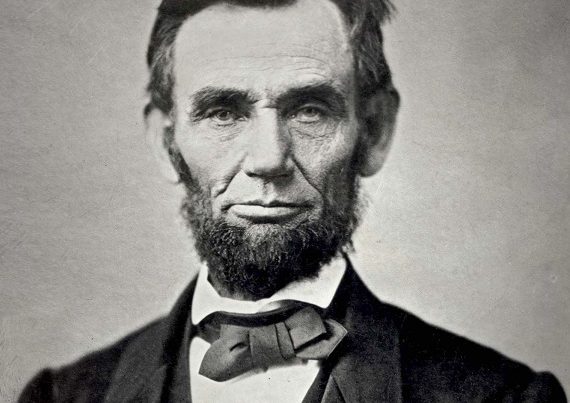
Secession: The point of the spear aimed at the heart of the American Leviathan – or so I once thought.
Certainly secession has been a live idea in Europe for a long time, often under the rubric of “self-determination.” Ludwig von Mises wrote in Liberalism in 1927 that “[t]he right of self-determination… thus means: whenever the inhabitants of a particular territory, whether it be a single village, a whole district, or a series of adjacent districts, make it known, by a freely conducted plebiscite, they no longer wish to remain united to the state to which they belong at the time… their wishes are to be respected and complied with.” Furthermore – not shrinking from the logical implication – the right “extends to the inhabitants of every territory large enough to form an independent administrative unit. If it were in any way possible to grant this right of self-determination to every individual person, it would have to be done.”
Much of the current American revival of the idea of secession is due to the effort of Emory University Professor Emeritus Donald Livingston, who began his career as a David Hume scholar. However, some 30 years ago he was astonished to find that no philosophic study of secession had been undertaken. He had searched philosophy papers published since 1940 and found just five reviews of a book and two articles about Quebec. Accordingly, in 2003, he founded the Abbeville Institute – Abbeville being the birthplace of John C. Calhoun, the site of the drafting of the South Carolina ordinance of secession, and the site of the dissolution of the Confederate government by Jefferson Davis at the end of the war.
Before 1865, secession was an idea not just open to discussion in the United States, but a necessary part of the intellectual landscape of a nation that came into existence through an act of secession from Great Britain. Consider the main secessionist impulses prior to the war, none of which were in the South:
• The Vermont Republic (1777)
• The New York proposal by its Senator Rufus King and Oliver Ellsworth to dissolve the Union (1794)
• Opponents of Jefferson’s 1803 Louisiana Purchase, notably Josiah Quincy III
• The New England secessionists during the War of 1812
• The Hartford secessionists and their supporters in the Essex Junto (1814-15)
• The secessionism of Federalist and former President John Quincy Adams (1839)
• Abolitionist William Lloyd Garrison and the New England Anti-Slavery Conventions (1834, 1844, 1858)
• The proposed secession of five Middle Atlantic states (1860).
But astonishingly, after the War Between the States, and more specifically in almost a century and a half following the Supreme Court decision Texas v. White in 1869, the impossibility of secession was for Americans accepted as “settled.” The author who wrote that decision was Lincoln’s former Secretary of the Treasury, Salmon P. Chase, who was appointed to the Court by Lincoln, and who wrote the opinion as Chief Justice. Particularly in ¶101 he followed the mythology invented by Joseph Story, Daniel Webster, and Lincoln that the United States was a unitary government and not a federation formed by a compact of sovereign states. In that paragraph he offered two remedies for a state to escape a tyrannical union: Either get the other states to consent to your exit (he didn’t specify how), or start a bloody revolution. The peaceful, bloodless remedy of secession became taboo.
This taboo remained in force for the rest of the twentieth century. In 1991, Secretary of State James Baker darkly warned Slovenia and Croatia that they should not secede from Yugoslavia, according to Lenard J. Cohen in Broken Bonds: Yugoslavia’s Disintegration and Balkan Politics in Transition [p221]. And in their book In Denial: Historians, Communism, and Espionage, John Earl Haynes and Harvey Klehr write of Columbia’s Eric Foner, a past president of both the American Historical Association and the Organization of American Historians:
In 1991 he railed against the growing movements in Latvia, Lithuania, Estonia and Georgia to leave the USSR and regain their national independence; they should be treated in the same way as the southern states that had attempted to leave the American union in 1861, he raged, calling on Gorbachev to deal with the secessionists as Lincoln had. [p40]
Oddly, not only did the executive and intellectual mandibles of the victorious Union enforce this taboo, but most of the defenders of the Southern tradition did so as well. Remove the blatherskite and the “Lost Cause” reveals itself to be a tacit Yankee concession that the South can wallow in nostalgia about its war heroes, provided that it either says nothing serious about secession or preserves the false definition that secession means violent rebellion. In its 1930 revolt against industrialism and progressivism, the landmark I’ll Take My Stand by twelve Southern Agrarians, the word “secession” appears not once. The opening essay by the leader of the movement, John Crowe Ransom concedes: “The further survival of the Southern tradition as a detached local remnant is now unlikely. It is agreed that the South must make contact again with the Union.” Search the constitutions of the associations supporting southern heritage (e.g., Sons of Confederate Veterans, United Daughters of the Confederacy) and you will find no support for the idea of secession.
Thus, two cudgels are used by the myth-keepers of Union: To link secession with violent rebellion, and to link it with black slavery.
The myth-keepers of Union must wield these two cudgels furiously because they defend the last two remaining points of legitimization of its power. The American Leviathan has long abandoned even its minarchist justification as the provider of security against domestic criminals and foreign aggressors and as the provider of impartial courts. Recent events have demonstrated that it will readily strip its citizens of their legitimate right to armed self-defense; its imperial armies will readily foment foreign wars without Congressional approval; and its utterly politicized judiciary, detached from the plain meanings of its founding document, will decide according to the interests of party. The last two remaining points of legitimization of its power are its guarantee to suppress internal civil revolts and its guarantee as a universal protector of human rights. The principle of secession is the spear aimed at the heart of these two claims.
Civil revolt is the challenge to the very essence of Union. To suppress it, the Union must have armed legions of executive and intellectual myth-keepers; the revolts must always be characterized as violent, as harboring “domestic terrorists,” as being “treasonous”; as being a “threat” for which no expense of funds is too great; no contortion of the law is too perverse to prosecute journalists who somehow abet the revolt, even when they are citizens of a foreign country, even when that country is an ally such as Australia. And always, always, any notion of peaceful revolt and its essential tool of secession must be suppressed as being a violent attack on the peaceful citizens of the Union.
The Union claim of being the guarantor of universal human rights is proclaimed by its executive and intellectual myth-keepers as always superior to the feeble protection of rights offered by subsidiary units of government. Would slavery have ended in the South without the universalist legions of the Union army? Of course not – never mind the perpetual slavery championed by its Corwin Amendment, a document endorsed by Abraham Lincoln and five Northern states. Would the Jim Crow laws of the South have been abolished without the universalist reinterpretation of rights under the Constitution? Of course not – never mind the fact that Jim Crow originated and endured in the North.
The mythic claims of an American Union predating the Constitution – a myth woven of whole cloth by Joseph Story, Daniel Webster, and Abraham Lincoln – have been annihilated, primarily by historians standing outside academe. They are just as easily annihilated by aprioristic reasoning: Each must exist with a right to his own person; he must have rights of property to realize that first right; he can concede rights to government only contractually and contingently, with the proviso that the contract can be voided at will when it works to the injury of those primary rights; there can be no community rights of some mythic person that supersede those primary rights of a real person or do so in perpetuity.
The mythic claims of an American Union predating the Constitution have been most resoundingly annihilated by the philosopher Donald Livingston in his lead essay to David Gordon’s wonderful 1998 collection, Secession, State & Liberty. He points out that the American Declaration of Independence is not a declaration of universal human rights, with the implication of a Leviathan enforcer of those rights; the Declaration is the publication of the Articles of Secession from Great Britain, with the implication that rights are not guaranteed by positive law but by inherent human axioms prior to any law.
The taboo is broken. As Norway could peacefully separate from Sweden in 1905 and thrive as a smaller country, as Singapore could peacefully separate from Malaysia in 1965 and thrive as a smaller country, as 15 former Soviet republics could peacefully separate from that nuclear police state in 1991, so will one of the American states – every one of which has some prior history of secession – eventually separate from the mythic Union. And with that one thread pulled, the entire Union will unravel like a cheap sweater. The Union cannot be pinned together with a million bayonets; it can thrive as smaller cantons and regions, each pursuing its own goals, with its government under the watchful local eyes of citizens jealous of their freedoms. The American Union is too large to satisfy the very diverse political needs of some 330 million people.






